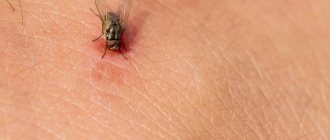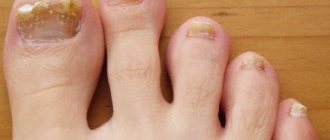What is the fabric made of?
The composition of artificial matter includes synthetic fibers, which irritate the mucous membranes and skin.
The most common types of threads used when sewing synthetic clothing:
polyester is an elastic and soft, but not hygroscopic material; acetate is a fiber reproduced from cellulose acetate, pliable, capable of maintaining its shape for a long time; elastane is a flexible and resistant material that can, after stretching, take on its original presentation; acrylic is one of the products of the oil industry; durable and resistant, but poorly permeable to air and highly electrified; Lycra is a strong, dense and at the same time very elastic fiber; widely used in the production of products that fit tightly to the body; viscose is an artificial material whose properties are as close as possible to the properties of natural fabrics; It is made from wood cellulose and has good hygroscopicity.
The moderate use of each of these fabrics in the production of clothing is completely justified. And allergies to synthetics most often arise not from the materials themselves, but from chemical products that are actively used for dyeing, fixing color, increasing wear resistance, protecting against moths and other treatments.
Common synthetic fibers
It's no secret that today it is almost impossible to buy clothes made entirely from natural fabrics. And this is understandable: synthetic fabrics are durable, lightweight and easy to care for. Clothes made from them wear well and retain their shape and color well. The cost of such items is significantly lower than that of clothing made from natural fabrics.
Such advantages make synthetics very popular, but only until allergies appear. Popular synthetic fabrics to which allergies most often occur:
- fleece is a synthetic knitwear made from polyester and used for sewing insulated clothing;
- taslan is an innovative fabric, in some cases it has a breathable structure;
- lavsan is an affordable fabric, which is a type of polyester and is produced during oil refining;
- perlon - artificial silk;
- Meryl is a lightweight but durable material, very pleasant to the body;
- Velsoft is an ultra-thin new synthetic material called new generation synthetics (microfiber).
Before purchasing fabrics or items, allergy sufferers should make sure that they do not contain synthetic fibers. They come in several types:
- polyurethane (spandex, elastane);
- carbon chain – containing carbon atoms;
- polyester (lavsan, vikron);
- polyamide (nylon, nylon).
Heterochain – containing carbon atoms and other elements:
- polyvinyl alcohol;
- polyolefin;
- polyacrylonitrile (cashmilon, acrylic, orlon);
- polyvinyl chloride.
Blog
Terms of use
This document “User Agreement” (hereinafter referred to as the Agreement) is an offer from IP Smolyak I.M. , posted on the website / (hereinafter referred to as the “Site”), enter into an agreement on the terms of the Agreement set out below.
- General provisions
1.1. You hereby confirm that from the moment of registration on the Site and/or during the time of using the Site, as well as personalized services of the Site, you are a User of the Site until you personally contact the Site administration with a request to renounce any relationship with the Site.
1.2. Your use of the Site in any way and in any form within the limits of its declared functionality, including:
a) viewing materials posted on the Site;
b) registration and/or authorization on the Site;
c) posting or displaying any materials on the Site, including but not limited to: texts, hypertext links, images, audio and video files, information and/or other information;
creates an agreement on the terms of this Agreement in accordance with the provisions of Articles 437 and 438 of the Civil Code of the Russian Federation.
1.3. By using any of the above options for using the Site, you confirm that:
a) have read the terms of this Agreement in full before using the Site;
b) accept all the terms of this Agreement in full without any exceptions or restrictions on your part and undertake to comply with them or stop using the Site. If you do not agree with the terms of this Agreement or do not have the right to enter into a contract based on them, you should immediately stop all use of the Site;
c) The Agreement (including any of its parts) may be changed by the Site without any special notice. The new version of the Agreement comes into force from the moment it is posted on the Site or brought to the attention of the User in another convenient form, unless otherwise provided by the new version of the Agreement.
- General terms of use of the Site
2.1. The site sells goods through a web resource and related services of the Site.
2.2. The site delivers goods using the methods specified in Part 5 of this Agreement.
2.3. The Site provides access to personalized services of the Site to obtain the most complete information on the product you are interested in, create ratings and opinions, participate in competition programs and other promotions conducted by the Site.
2.4. You hereby give your voluntary consent to inform you about all actions of the Site related to the sale of goods and/or provision of services, including the status of order fulfillment, as well as other events of any nature related to the services of the Site.
2.5. Consent to receive newsletters: By subscribing to SMS and email newsletters or third parties authorized to send newsletters on behalf of , on the Internet, I agree to receive newsletters to the phone number and email address I specified when subscribing through the newsletter subscription service on the website. I am informed that if I want to unsubscribe from the newsletter, I will need to independently follow the “Unsubscribe from the newsletter” link indicated in the text of messages sent by the site from the Site’s email address or report my disagreement with receiving newsletters at the addresses specified in the “Contacts” section of this Agreement. I also give permission to the Site or third parties authorized to send mailings on behalf of the Site, to collect, store and process all personal data transmitted by me to the Site (including last name, first name, patronymic and email address) for the purpose of informing about news and other Site events.
2.6. You agree that the Site has no liability for delays, failures, incorrect or untimely delivery, deletion or failure to store any notices. At the same time, the Site reserves the right to re-send any notification if you do not receive it.
2.7. All questions regarding information support can be directed to:
2.8. You acknowledge that the description accompanying the product on the Site does not purport to be comprehensive and may contain inaccuracies. You have the right to send any comments regarding inaccurate product descriptions to the Site at .
2.9. You acknowledge that the Site makes reasonable efforts to ensure that the appearance, packaging and characteristics of the goods correspond to the descriptions given in the Site catalog. At the same time, the Site brings to your attention that the actual appearance, packaging and characteristics of the product may differ from these descriptions in the case of an assortment product, as well as in the event of changes made to the product directly by the manufacturer.
2.10. You are informed that the price and availability of goods on the Site changes around the clock without prior notice and is indicated in the individual status and detailed product card displayed in the catalog on the Site.
- Obligations of the User when using the Site
3.1. You agree not to use the Site services for the purpose of:
3.1.1. uploading content that is illegal, violates any rights of third parties; promotes violence, cruelty, hatred and/or discrimination on racial, national, gender, religious, social grounds; contains false information and/or insults to specific individuals, organizations, authorities;
3.1.2. inducement to commit illegal actions, as well as assistance to persons whose actions are aimed at violating the restrictions and prohibitions in force on the territory of the Russian Federation;
3.1.3. violations of the rights of minors and/or causing them harm in any form;
3.1.4. infringement of minority rights;
3.1.5. impersonating another person or representative of an organization and/or community without sufficient rights, including employees of the Site;
3.1.6. misrepresentation regarding the properties and characteristics of any goods from the catalog on the Site; incorrect comparison of goods, as well as the formation of a negative attitude towards persons (not) using certain goods, or condemnation of such persons;
3.1.7. uploading content that you do not have the right to make available under Russian law or under any contractual relationship;
3.1.8. downloading content that affects and/or contains any patent, trademark, trade secret, trade name, copyright and related rights, as well as other rights to results of intellectual activity owned or legally used by third parties;
3.1.9. downloading advertising information and/or spam that is not specifically permitted;
3.1.10. collection and processing of personal data, information about the private life of any persons;
3.1.11. disruption of the normal operation of the Site;
3.1.12. violations of Russian or international law.
3.2. You agree not to use swear words, obscene and offensive images, comparisons and expressions on the Site, including in relation to gender, race, nationality, profession, social category, age, language of a person and citizen, as well as in relation to organizations, authorities, official state symbols (flags, coats of arms, anthems), religious symbols, cultural heritage sites (historical and cultural monuments).
3.3. You acknowledge and agree that the Site has the right (but not the obligation) at its sole discretion to refuse to post and/or remove any content available through the Site services.
- Privacy Policy
4.1. The terms of the Privacy Policy and the relationship between you and the Site related to the processing of personal data are governed by Federal Law of the Russian Federation No. 152-FZ of July 27, 2006. “About personal data.”
4.2. The privacy policy applies to personal data that the Site received or may receive from you when registering and/or placing an order on the Site, and necessary to fulfill obligations on the part of the Site in relation to the product/service you purchase and/or your access to the Site services.
4.3. The privacy policy is available at the link – /politika-konfidencialnosti
- Terms of purchase and delivery of goods
5.1. You can purchase goods on the Site by paying for it in the following ways: cash, bank card, bank transfer using a receipt, gift certificate.
5.2. You hereby agree that the payment method you choose cannot be changed from the moment you place an order on the Site. /
5.3. You hereby agree that confirmation of an order paid by bank card or bank transfer occurs only after confirmation of the debiting of funds to pay for the order.
5.4. You confirm that payment for the order by credit card or receipt must be made within 3 calendar days from the date of its registration on the Site. You agree that if you do not pay for the order after the specified period, the order may be cancelled.
5.5. The site delivers goods using the following methods: courier delivery, courier services, transport companies and Russian Post. You have the right to choose any delivery method convenient for you in accordance with the terms of delivery to your region/country or based on your preferences.
5.6. You agree that if it is impossible to transfer the goods to you due to your fault, including your violation of the period during which you are obliged to pick up the goods, the Site will regard it as your refusal of the goods. In this case, the goods are returned to the Site, and the order is considered cancelled.
5.7. In the event of your refusal of the goods, as well as in the absence of the goods you ordered, the advance payment for the goods transferred to the Site, with the exception of the Site’s costs for delivery of the goods, will be returned to you no later than 10 calendar days from the date of presentation.
5.8. You can send all questions related to the terms and conditions of delivery of goods to the Site at
- Responsibility
6.1 The Site services may contain links to other resources. You acknowledge and agree that the Site is not responsible for the availability of these resources and their content, or for any consequences associated with your use of the content of these resources.
6.2. You also agree that the Site does not bear any responsibility for your personal data that you provide to third-party resources and/or other third parties if you access them from the Site.
6.3. You acknowledge that the Site is not responsible for possible loss and/or damage to data that may occur due to your violation of the provisions of this Agreement, as well as improper access and/or use of the Site’s personalized services.
6.4. Responsibility for the actions of minors, including their purchase of goods from the catalog on the Site, lies with the legal representatives of minors.
6.5. You agree that in the event of failure and/or improper fulfillment by the Site of its obligations to sell and/or deliver goods to you in connection with your provision of false and/or invalid information about yourself, as well as your failure to comply with the terms of this Agreement, the Site is not responsible.
- Requisites
IP Smolyak I.M.
OGRN 304770001303292
TIN 773471285331
Address: Moscow, st. Podvoisky, 18
For all questions, requests, suggestions
Causes of allergies to synthetics
Several factors can trigger the body’s negative reaction to synthetic material. It happens that the root cause of allergies is not artificial clothing, but the person himself. But first things first. And so, the causes of allergic rashes.
Mechanical
The artificial fabric itself acts as an irritant due to its low hygroscopicity, which contributes to moisture retention.
When a person sweats, synthetic fabric not only retains droplets of liquid in the fibers, but also does not allow the material to “breathe”, and the necessary natural air exchange does not occur. Moisture does not have the opportunity to evaporate. And due to the excess salt in the waste released from the sweat glands, irritation only intensifies.
Photo: Rubbing with a cloth in the armpit area
The body can also react to lint, barbed threads, wool, and seams. Intense friction gives rise to inflammation of the skin, leading to redness of the affected areas and itching.
When, after removing a synthetic product, the skin calms down and such manifestations do not bother you, this is a sign of an allergy to the fabric.
Chemical
If everything is in order with hygroscopicity and other features of matter, but the symptoms, nevertheless, continue to bother you, the reason for this must be sought deeper.
Namely, in the chemical composition that was used in processing the fabric in order to improve the quality and presentation:
all kinds of dyes that sometimes color the water so intensely when washing a product; chemicals that, if accepted standards are not followed, give off a pungent odor of oil.
All this can lead a person with sensitive skin to a serious allergic reaction, including poisoning and irreversible consequences. Therefore, before wearing synthetics, the product must be washed thoroughly.
If after removing clothes and hygiene procedures the symptoms of irritation subside, you will have to get rid of synthetic items.
Psychological
Often, the manifestation of allergies should not be blamed on synthetics, but on the person himself. Having watched enough “useful” programs about the inevitable harm of artificial matter, people develop a subconscious fear of irritation.
Many people have serious phobias regarding skin rashes in the form of red dots, blisters and small swellings. Self-hypnosis does serious things.
This may seem fantastic to some, but often even relatively harmless synthetic clothing can cause severe allergies in especially impressionable people.
To understand whether this is truly a reaction to the fabric or just a psychological mania, contact a competent specialist for examinations and tests for skin sensitivity to synthetics.
Skin tests
Diagnosis using skin testing allows one to identify in advance a person’s tendency to allergies. It is prohibited to carry out during an exacerbation of any disease, as well as if there is a history of anaphylactic shock. There are several ways to do a skin test: • Patch test. An applicator soaked in an allergen solution is applied to the skin. The reaction is assessed within 48 hours. • Prick test. A drop of a provoking substance is applied to the scratch. Observation takes up to 40 minutes. • Subcutaneous. The antigen is administered using a syringe (similar to the Mantoux test). In practice it is rarely used due to excessive aggressiveness.
In rare cases, respiratory tests (nasal or bronchial) are used instead of skin tests. Thus, to detect occupational asthma, the patient, under the supervision of a doctor, inhales an irritating substance identified at the workplace.
Hypoallergenic pillow: choosing the right one
The material is in direct contact with the skin and mucous membranes, and the level of permeability for filler particles and dust depends on its porosity. Therefore, it is very important to choose the right type of fabric - even though the pillow is covered with a pillowcase from the bedding set. It is better to give preference:
- Cotton.
- Silk.
- Satin.
- Microfiber.
For the top pillowcase, you can purchase any natural or synthetic fabric without wool or latex in the composition. It is better if it is without a picture; however, since many people prefer colored bedding, it is worth paying attention to the quality of the dyes: they should not be toxic and remain on the skin after sleep.
In addition, there are special thick covers for people prone to allergic reactions - they are worn under the pillowcase and create a barrier between the filling components and the environment. However, they are needed only in cases where it is not possible to replace a pillow made of down, feathers, or accumulated dust.
Diagnostics
But it happens the other way around - a person does not see allergies point-blank, not to mention manias and phobias. It’s just that an allergy to artificial clothing does not always manifest itself as severe itching and profuse dermatitis.
Sometimes these can be rare spots that itch slightly.
Occasionally a person sneezes, perceiving this as dust getting on the nasal mucous membranes or a minor cold. Everything would be fine, but if diagnosed untimely, the disease can develop from a temporary stage into a chronic one.
How to identify clothing allergies
To independently diagnose the body’s negative reaction to clothing, it is enough to check and compare how the skin responds to contact with synthetic fabric.
Particular attention should be paid to hypersensitive areas of the body (neck, stomach, knees, wrists).
Do you feel tingling, itching, discomfort, does your skin turn red and become blotchy? In this case, there is only one way out - the complete exclusion of synthetics from the wardrobe.
If it's brand new, try washing the item thoroughly and check your skin's reaction again. When the body reacts equally sharply to all things made of artificial fibers, this is a sign of a mechanical factor.
Photo: Severe itching
Allergies to certain items of clothing are typical due to chemical irritation. This means that such tissue was treated with a substance (or several at once), upon contact with which the skin finds itself in conditions unnatural for normal functioning.
What is latex?
Latex is the processed sap of the rubber tree Hevea ( Hevea brasiliensis
) with the addition of a number of chemicals to impart the necessary properties. This milky sap flows out of a cut in the bark in the same way as milk flows out of the stems of dandelion, celandine and milkweed. Synthetic latex is made from synthetic rubber. The word "latex" is synonymous with "natural rubber".
Latex is found in many consumer products and medical materials, such as balloons, elastic bands, stockings, shoes, rubber boots, air mattresses, car and bicycle tires, rubber gloves, baby pacifiers, scuba suits, elastic clothing, anesthesia, drainage and infusion devices, bottle caps, inhalation masks and catheters and much more.
Special care is required when using latex in products such as condoms and cervical caps. In addition to problems with your sex life, a latex allergy can cause very serious reactions in your body. Durex offers Avanti condoms with a latex-free guarantee. Synthetic products, such as latex paint, do not contain natural rubber.
What to do if you are allergic to fabric
What to do if synthetics, as it turns out, are an unacceptable material for the skin? How to correctly approach the treatment of allergies in an infant? And what to do if the disease manifests itself during pregnancy?
Baby
Clothes for a newborn baby should, in principle, not contain artificial fibers, since the baby's skin is incredibly sensitive. And the reaction to chemicals and rough material can be too unpredictable, from rashes to anaphylactic shock.
First of all, you need to get rid of synthetic products.
Why not check every artificial slider for a negative reaction? If it turns out that your baby is susceptible to synthetics, from now on look in stores only for things made from natural fibers.
Be sure to contact a specialist who will give valuable recommendations and prescribe treatment that is most appropriate for the child’s age and condition.
A child's wardrobe should consist entirely of things that are safe for health. Avoid too bright, saturated shades - this is a sign of an excessive amount of dyes. An atypical and unpleasant pungent odor should also be a reason for suspicion.
Read how to protect yourself from
allergies to tattooing
Can you be allergic to seeds? How to identify it and how to treat it? Read here.
During pregnancy
While a woman is preparing for the birth of a child, she needs to take care not only of her health. If the expectant mother is allergic to synthetic fabrics, it is better to be especially prudent during pregnancy.
First you need to eliminate the cause that causes the negative reaction.
This means that for all 9 months, clothing adjacent to the body (underwear, shirts, turtlenecks) should not contain synthetics.
It is necessary to notify the doctor early on so that he can prescribe medications and give general recommendations for the safe wearing of synthetics.
Symptoms of the disease
The most common allergic manifestations to synthetic fabrics are expressed by the following symptoms:
- the appearance of allergic rhinitis;
- difficulty breathing, up to suffocation;
- increased lacrimation;
- hyperemic rashes on the skin;
- The child may develop contact dermatitis.
With complicated symptoms, anaphylactic shock may develop, accompanied by spasms, fainting and a drop in blood pressure.
Allergies in pregnant women
This type of allergy often occurs during pregnancy due to the weakened immunity of the expectant mother. If synthetics cause an allergic reaction, avoid synthetic underwear, as they, being close to the body, can provoke unwanted symptoms. Try to replace synthetic clothes with cotton ones. It should be pleasant to the touch and not cause allergic symptoms.
Be sure to tell your doctor if you have any allergies, since not all medications can be used for treatment during pregnancy. The doctor selects medications taking into account the individual characteristics of the patient and the duration of her pregnancy.
Treatment
The success and rate of treatment of this type of non-food allergy depend on the stage of its development (temporary or chronic).
The first step towards getting rid of a disease is eliminating the causes.
That is, keeping the use of synthetics to a minimum, wearing only over natural fabrics, or completely eliminating the irritant. And how to treat further - with medications or folk remedies, everyone decides for himself.
Drugs
Ideally, treatment is prescribed by an allergist or dermatology specialist.
And to combat allergies on your own, you need to arm yourself with antihistamines.
For example, Desloratadine or Loratadine help well with complex exacerbations of the disease. And the elimination of mild rashes can be entrusted to such drugs as Fenistil, Cetrin.
Folk remedies
Common herbs:
a frozen decoction of chamomile and mint will help quickly relieve irritation and eliminate severe itching; An infusion of bay leaves can be used as a bath or as a lotion. A decoction of the same composition helps no worse than an infusion; A decoction can also be prepared from a mixture of herbs and chamomile. Wipe the areas of skin affected by an allergic rash with the strained liquid.
Find out how it manifests itself
allergy to rice
What is an atopic allergy? Read here.
Can a baby be allergic to cheese, and how does it manifest itself? Read here.
How to recognize angioedema?
It is characterized by swelling of the subcutaneous tissue and effusion of intravascular fluid. The cause is often food, medicine or an insect bite, less often - plant pollen. The swelling is usually asymmetrical and causes pain in the person.
Quincke's edema can be determined by visual signs. Usually affected: • lips; • language; • eyelids; • neck; • limbs; • genitals. An ambulance should be called immediately, since in an acute condition the respiratory tract is often affected. The condition is similar to an asthma attack - swelling of the larynx causes its stenosis (narrowing). This leads to decreased respiratory function, which increases the risk of death. Moreover, the chronic form of the disease is no less dangerous than the acute one.
Preventive measures
To prevent irritation from becoming chronic, it is necessary not only to successfully treat it, but also to prevent possible relapses. If you do not want to provoke new attacks of allergies to synthetic materials, give preference to cotton or linen items, as well as clothes made of silk.
First of all, this should be underwear and all products that have direct contact with the skin.
For washing, use only powders with a hypoallergenic composition.
An allergy to synthetics is not the most common type of negative reaction to an irritant. The symptoms of this disease are easily preventable and treatable, and provoking factors can be excluded at any time.
Choose clothes not only by beauty, but also by smell and color. Unnaturally saturated colors can cause an allergic reaction, as well as foreign odors.
Clothing made from synthetic fibers usually costs much less than natural items. Therefore, not everyone can afford to fill their entire wardrobe with cotton and silk outfits.
And I also want to wear bright clothes. To ensure that the variety in the closet does not lead to monotony in the body's reaction, replace at least the underwear that is adjacent to the body with natural material.
Types of allergens
For an allergic reaction to develop, the body must encounter an antigen, that is, a foreign substance. The immune system recognizes it and begins to fight. Usually there is an increased sensitivity of individuals to: • plant pollen; • pet hair; • food products; • dust mite excrement; • mold; • household chemicals; • insect poison; • latex; • medications. Food allergens are noteworthy in that not only antihistamines, but also enterosorbents (activated carbon, Polysorb, Enterodes) help neutralize their effect, and for respiratory reactions, vasoconstrictor drugs (like Allergodil or Polydex) are important. Defining a group is relatively simple: it is not difficult for a person to compare the appearance of unpleasant symptoms with specific conditions. It is more difficult to understand which substance causes hypersensitivity. This will require a blood test.
Allergies in children
More than 40% of children worldwide, according to WHO, are allergic to synthetics. From birth, modern children are surrounded by synthetic and polymer materials: bathing products, baths, pacifiers, toys - all this is made from synthetic materials. Parents should know that breastfed babies are much less susceptible to allergic reactions. It has been established that breast milk contains immune cells that protect the baby from adverse environmental influences. In addition, infants are less likely to get sick.
An allergy to synthetics in a child most often manifests itself in the form of rashes on the legs, so when diagnosing this part of the body, special attention should be paid.
Mechanism of reaction development
An allergic reaction develops when immune cells perceive substances contained in clothing as foreign and dangerous. As a result, blood cells begin to produce protective antibodies, which spread throughout the body, including reaching skin cells. When antibodies and protective cells interact, histamine is released, which provokes allergy symptoms.










